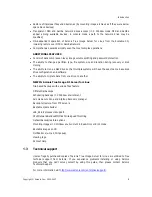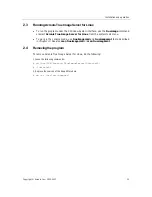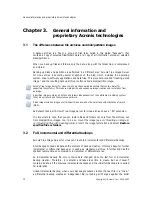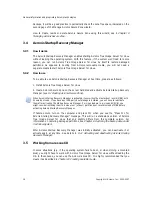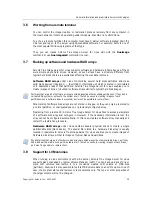
Introduction
8
Copyright © Acronis, Inc., 2000-2007
For correct backup of mission critical databases, Acronis True Image Server for Linux will
execute your custom commands, that suspend and resume database processing, before and
after data capture.
Supports Cutting Edge Technology
Businesses today are moving to leverage the latest technologies, dual-core 64 bit processors
and 64 bit operating systems. With Acronis True Image Server for Linux, you can protect
these new machines, as well as legacy ones, running one solution.
Leverages Existing Technology Investments
The product can leverage your current storage infrastructure by supporting a wide variety of
storage media, so you can avoid costly hardware purchases to implement the solution. The
product supports key storage technologies such as: Direct Attached Storage (DAS), Network
Attached Storage (NAS), Storage Area Networks (SAN), Redundant Arrays of Independent
Disks (RAID) devices, tapes, USB and IEEE-1394 (FireWire) compliant storage devices, CDs,
removable drives (Floppy, Zip, etc.) and shared storage. Moreover, the product ensures that
you maximize the space on these resources with four levels of compression.
Disk cloning and new disk deployment
Acronis True Image Server for Linux can be used to clone an image onto multiple servers.
For example, a company purchased several servers and needs similar environments on each
of them. Traditionally, an IT manager should install the operating system and programs on
every server. With Acronis True Image Server for Linux, the IT manager can create a disk
image of the first system deployed. That image can then be duplicated onto multiple
servers.
If you need to upgrade the server hard disk drive, Acronis True Image Server for Linux
simplifies the task to few mouse clicks creating the exact copy of your old disk to a new one
and adjusting partitions size to fit a new hard disk.
1.2
Features of Acronis True Image Server for Linux
•
Image creation without system shutdown
•
Acronis True Image Server for Linux images only the sectors that contain data, so images
are created in just a few minutes
•
Support for a wide variety of IDE, SCSI, USB, FireWire, and PC Card (formerly PCMCIA)
storage media. CD-R/RW and tape drives are supported as well (except for console mode)
•
Support for all hard disks, regardless of capacity
•
Support for all Linux and Windows file systems, including Linux Ext2/Ext3, ReiserFS, JFS,
XFS, Linux Swap, FAT16, FAT32, NTFS; sector-based support for other file systems. JFS and
XFS are supported without resize while restore
•
Backup and restore software RAIDs (md devices) both on running system and from rescue
CD
•
Full and incremental backups
•
Scheduled and periodical image creation using
cron jobs utility









